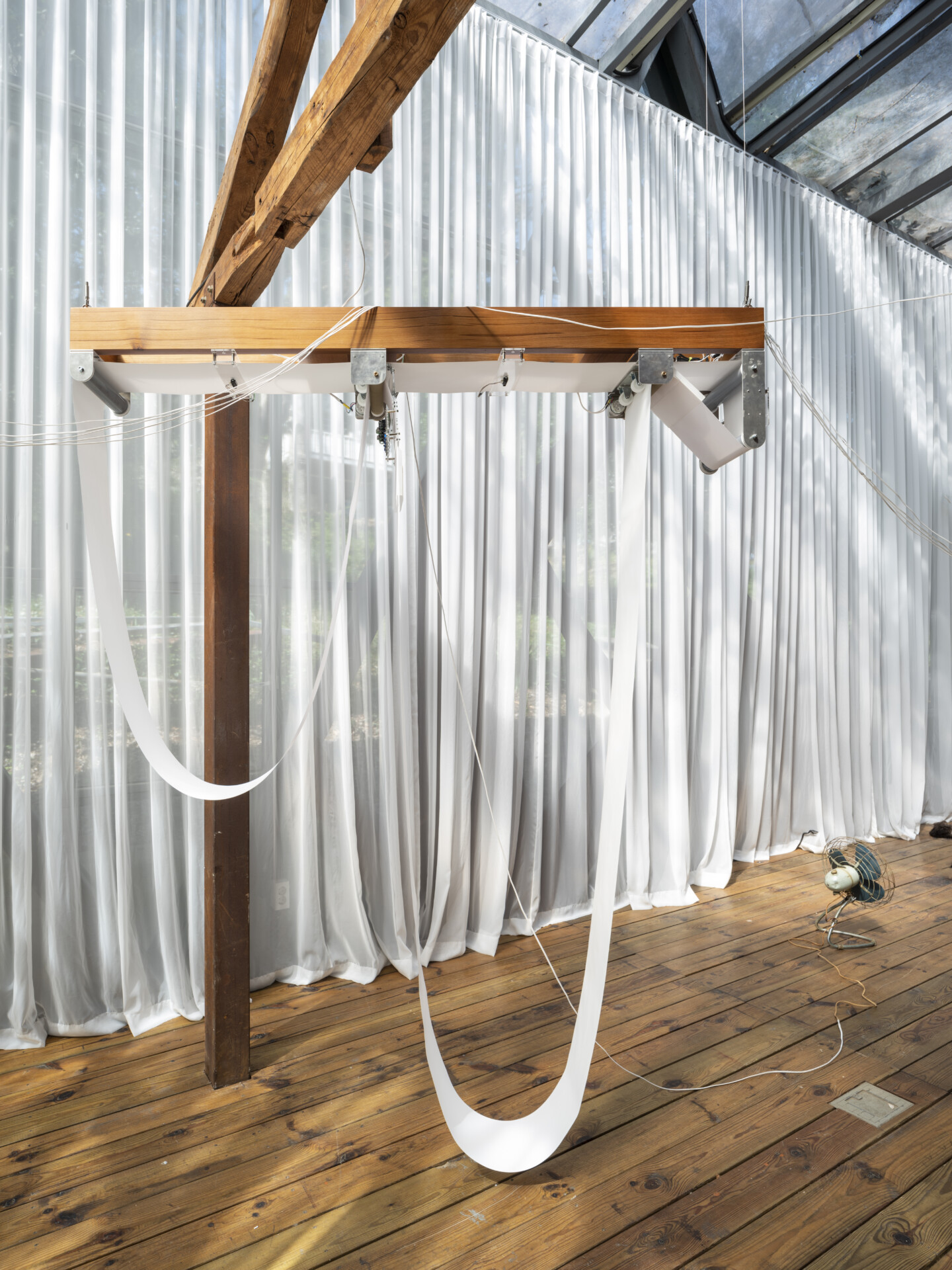Yuko Mohri
Born 1980 | Kanagawa ken
Lives and works Tokyo
An installation artist, Yuko Mohri creates kinetic sculptures built from everyday objects and machine parts interacting with external forces. I/O 2011–23 is a set of structures composed of long loops of white paper that cascade down from above, forming a series of waves. As the paper brushes the floor it collects dust and other debris, which may not be visible, but still exist. Impacted by these minute elements, as well as air flow, humidity, and the unevenness of the floor, a unique ‘musical score’ is created, which is read by a sensor and converted into electrical signals that move objects, such as instruments, lights, or blinds. For the 14th Gwangju Biennale, Mohri has created a site-specific ecosystem within one of the glass pavilions of the Horanggasy Artpolygon. This will reinterpret I/O as a ‘tone of history that was never written’ by using elements collected in Gwangju and connecting it with Han Kang’s The White Book (2016). From Gwangju, Kang’s novel has three chapters: her own narrative, the narrative of her elder sister who died soon after her birth, and the author’s re-telling of her farewell address to her sister. By overlapping the multilayered history of Gwangju with Kang’s The White Book and her own I/O, the artist aims to create a symbolic system that picks up lots of voices that exist and have existed, even though they cannot be seen.
Yuko Mohri, I/O 2011–23. Roll paper, bell-lyra, duster, motor, LED light, light bulb, blinds, toilet paper, spoon, censor, etc.. Dimensions variable. Courtesy the artist, Supported by Yoshino Gypsum Art Foundation, Nomura Foundation and Asahi Shimbun Foundation. Detail, 14th Gwangju Biennale (2023). Image courtesy Gwangju Biennale Foundation. Photo: glimworkers
